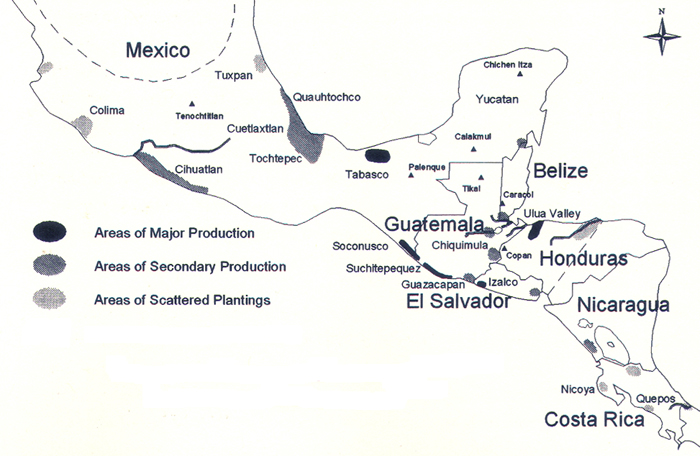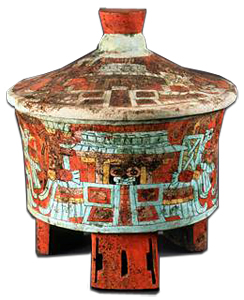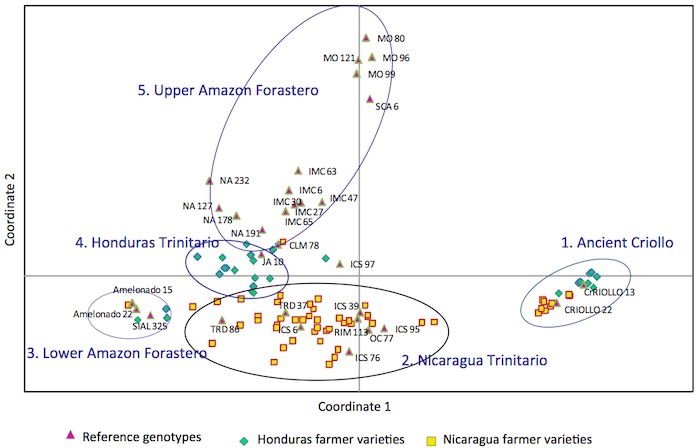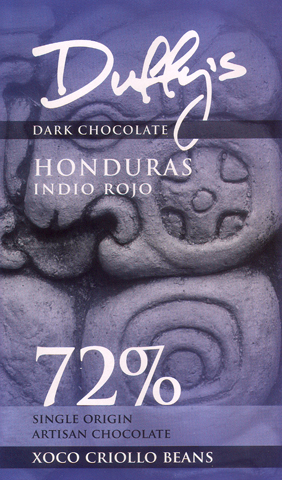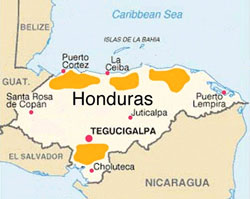 FLAVOR PROFILE: select hi-flavor seeds show solid underlying chocolate with light fruit overlay; otherwise expect some wood & mushroom florals + acetic acid driving fresh fruit
FLAVOR PROFILE: select hi-flavor seeds show solid underlying chocolate with light fruit overlay; otherwise expect some wood & mushroom florals + acetic acid driving fresh fruit
CHARACTERISTICS: lay of the land varies from severe hybridization of foreign types (some imported by pirates) to rare relics of heirloom Criollo (connected perhaps to the Chibcha-speaking peoples of northern South America)
If the piedmont in modern–day Guatemala grew the most treasured cacáo along the Pacific coast, & Tabasco (Mexico) likewise for the Gulf Coast, then Honduras propagated the great ancient varieties on the Caribbean. Specifically, the Ulua Valley where, according to scholars such as Terry Powis, John Henderson & Rosemary Joyce, the standard for Mesoamerican chocolate may have taken shape as a draft served in drinking vessels. The practice then spread throughout the continent. Both Fernández de Oviedo & Bishop Landa, Spanish chroniclers in the 16th century, wrote that Mayans from elsewhere traded salt, clothes & slaves for Ulua Valley cacáo.
The area became home to some of the earliest pottery in Mesoamerica: finely made, thin-walled vessels reminiscent of another significant cacáo-center at Soconusco on the Pacific coast of Mexico. By 1400 BC, these two coastal communities ran a burgeoning trade network.
During the Middle Formative Period (c. 1,000BCE), the production in the suite of vessels advanced with a new clay mixture & firing technique that boasted multi-chromatic finishes & deeply carved designs — the more elaborate forms known as the Playa de los Muertos style at Puerto Escondido. Ceramics included a flared neck for the all-important frothing of the chocolate & a narrow spout for pouring it – signifying cacáo’s symbolic dimension of sexual intercourse (the foamy head represented the phallus whose bubbling led to orgasm). All part & parcel to the ritual use & ceremonial aspects it engendered. The width & depth of its scope is breath taking. Its use appears at almost every station in life. Whether marriage, fertility, baptism, funerary or ancestral worship, cacáo played a role (see Mexico for more).
The preparation (grinding of the seeds with stone tools), serving (pouring chocolate in a highly suggestive manner to rival a Japanese tea ceremony), consumption (by honored guests of distinction & status during choreographed social functions) & finale (drinking vessels & pots were smashed, Hendrix-style, to heighten the drama of the event), rose to the level of performance art.
Probably nowhere were such events held like in Copán. And no discussion about Honduras can sidetrack the importance of this royal city-state.
Copán so fascinated that John Lloyd Stephens, who co-authored Incidents of Travel with Frederick Catherwood in the 1840s about their voyage there, writes of buying the entire stone city of Copán for $50 under the false hope of floating all of it downstream to… a museum somewhere (preferably in NYC).
Cameron McNeil posits that Copán’s very location at the southeastern periphery of the Mayan World opened it to influences from abroad, reflected in art works that, while still Mayan, are unique & apart from it.
At the center of Copán, 3 royal tombs form a ceremonial acropolis that would frequently be re-entered by the living. Deep within they contain the resting places of the polity’s founder, K’inich Yax K’uk Mo’ who reigned from 426-37, his Queen wife, & a later successor king. Interred with them are precious offerings including shell ornaments, jade, hematite mirrors, stingray spines & ceramic vessels, tucked underneath the sarcophagus.
Upon analysis, chemist Jeffrey Hurst found theombromine traces lining the interiors of some pottery, a key marker for Theobroma cacao &/or possibly its relative Theobroma bicolor, (the latter also consumed & known among the people who lived here as pataxte). The thought is that cacáo would sustain the departed on their long journey thru the underworld… a finest offering made even more sacred by its escorting them.
The “Dazzler Vase” (above), arguably the most famed vessel from all of Meoamerica, recovered from within the royal ‘Margarita Tomb’ in Copán, Honduras. It sports a goggle-eyed figure peering out the window of a talud-&-tablero style structure that eerily resembles another tomb nearby called the ‘Hunal’. Mayanist David Stuart views the figure as the spirit of Copán founder King K’inch Yax K’uk’ Mo’ looking in on his Queen wife (& mother of their son King K’inich Popol Hol) buried in the Margarita Tomb across from his own royal crypt at Hunal. A well-preserved layer of cacáo residue lines the bottom of the vase, retaining the hue of dark chocolate, the remains of a possible ritual draft.
Additionally, cacáo tested positive in service ware containing turkey bones from the elite homes of Copán – the real possible origins of pueblo móle. Troves of iconography such as cacáo trees feature prominently all over sculpture dating from the Late Classic Period. Simon Martin interprets these among a cosmological complex that unified the Maize God, the Axis Mundi (World Tree) & inverted saurians (crocodilian motifs), a spiritual constellation that places cacáo at or near the very center of it. (For a further discussion of its import, again see Mexico.)
Today in Honduras, the Lenca, now converts to Christianity, believe that God directed Adam & Eve on the sacred use of cacáo. They still employ cacáo seeds as a kind of currency in offering them to the deity as a down payment for future agricultural fortune. Ground with maize into a chicha or alcoholic drink, it serves to toast the Earth.
And while a popular cold draft called tiste mixes cacáo with sugar & rice — sometimes including the addition of cinnamon, achiote & vanilla — sounds mundane enough, geneticists & field researchers have embarked on a mission of rescue & recovery of Honduras’ royal cacáo roots. Their expeditions take them around the country &, interestingly, to Copán… where heirloom trees are believed to be growing among the ancient ruins.
In 2012, Kun Ji, Dapeng Zhang, et.al., analyzed the DNA of 84 cacáo trees picked randomly from orchards in southern Honduras & northern Nicaragua. Ancient Criollo accounted for roughly a quarter of these growers’ varietals while a handful showed for pure Amelonado. The rest comprise hybrids variously clumped together under the label ‘Trinitario’. Of those ‘Trinitario’, all but one trace their parentage to Amelonado (in other words, very little Criollo lineage).
Scatter-plot dendogram of the genetic cacáo profile among 84 growers’ selections from southern Honduras & northern Nicaragua
Yet more trees belonging generally to the Criollo group tend to survive in remote areas & differ from the more typical Pentagonum-Criollo associated with the Mayan along the Pacific Coast. This leads to the suggestion that they may have originated from the Lake Maracaibo region of Venezuela.
Elsewhere in Honduras 3 broad categories of cacáo exist: a) some aforementioned common Trinitarios; b) the lower Amazon Amelonado; & c) Upper Amazon crossed with Trinitario — referred to by many locals as “Indio Rojo” — particular to Honduras with light pink seeds & very little contribution from Criollo.





